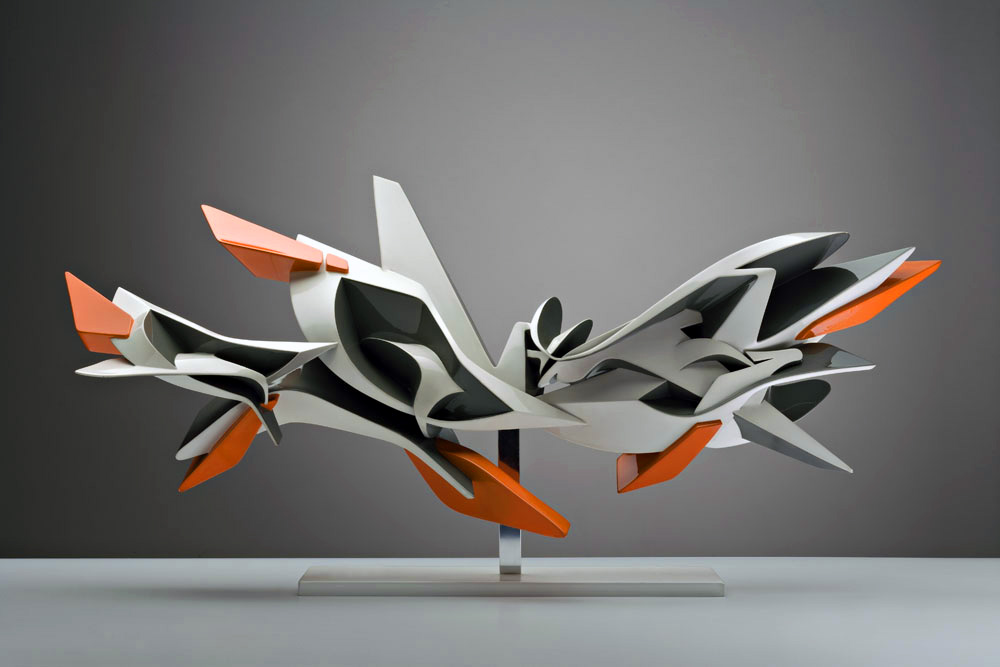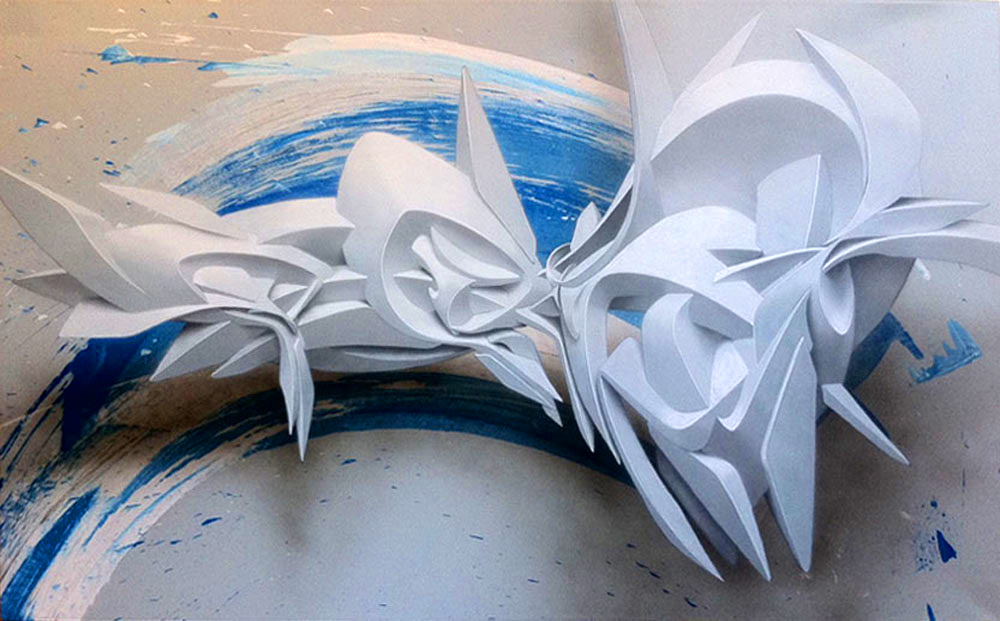Tagging 2.0: How one artist uses tech to give life to 3D graffiti
Full Story
https://bigthink.com/technology-innovation/how-augmented-reality-will-revolutionize-the-art-world/
Tagging 2.0: How one artist uses tech to give life to 3D graffiti
Since the caveman era, humans have put art on walls. The same is true today – writing graffiti is, clearly, just part of human nature. And while the graffiti scene may not be as vibrant and fierce as it was during the 1970s and ’80s, the Web has allowed street artists to get their name out in the world like never before, and the increasing availability of design software has launched “wild style” into a whole new dimension.
Few dominate this realm as well as Italian graffiti writer and sculptor Manuel Di Rita, a.k.a. “Peeta,” whose mind-blowing 3D pieces could impress even the most hardboiled transit cop. Peeta bombed his first wall near his hometown of Venice back in 1993, and now makes a living as an accomplished painter, sculptor, and graphic design artist. We got in touch with Peeta to snag an insider’s look at graffiti in the digital age.
Digital Trends: What is the process for developing your unique style of graffiti?
Peeta: I did not start writing in 3D, my style transformed into a 3D one in 2000, more or less. Before of that my style was flat, graphic and organically formed. But I then turned it into something twisted and round. The role of sculpture has been essential in this process: it has helped me to deeply discover and understand the rules of shadows, the disposition of colors, surfaces, and shapes.
Do you use any software in creating your designs?
I mostly use CAD softwares, mainly: Rhino, Illustrator, and Photoshop. My favorite one is Rhino; first of all, because it is the one I use the most as I project sculptures with it. It is versatile and convenient to quickly and fluidly create 3D objects.
Rhino allows me to view the sculpture three-dimensionally and from every angle, while also virtually extracting its various surfaces to consider them on a 2D plane. In this way, I am able to fully understand the exact shape and size of the material needed to build the work. I proceed to cut and assemble PVC plates together, then cover them with a layer of polyester to hide any imperfections resulting from the process.
Your pieces look incredibly complex. What is the process for creating a piece? How does it start, and how long does it take to finish?
First, I do a sketch. I always write “Peeta” on my canvases and walls, so I start my sketch writing the letter “T”, then I proceed towards the right and write the “A”, and then towards the left writing step-by-step: ”E”, “E”, “P” (even if sometimes I write my name only with one ”E”). When I’ve finished doing that, I go over the part I’m interested in for the development of the painting, doing some black outlines.
After that, I paint a dropped shadow with the “fat cap” on the bottom of the painting, which helps me conveying a sense of 3-dimentionality to my letters, that now seem to float on the centre of the canvas. Finally, I start coloring the letters and giving life to volumes. I do my light and shades effects starting from the dark tones and proceeding towards the lighter ones. I can do that very easily using the technique of the “mixing cap” that allows me to directly mix colors within the spray cans.
A piece on a wall could take from one day to 23 days; it depends on its complexity. A canvas is a more detailed and precise piece of art that could take from a few days to over a week.
How do you believe digital design has changed art in the 21st century? (Or has it?)
First of all, it has spread new disciplines inside the art scene. Moreover, it has provided new means to fasten its procedure and increase the number of generated artwork, also in series. Finally, thanks to new means offered by technology, a larger portion of people can penetrate the art world with new disciplines and techniques, being considered artists in a not classic categorization.
How has technology influenced the contemporary graffiti scene?
There’s a new trend in graffiti, especially in eastern Europe, that consists in ‘digital graffiti writing.’ [With digital graffiti writing,] walls are not really painted, but virtually created over a picture of a wall. [They are] never painted for real. This is really taking off in the 3D graffiti scene. Also, older 3D writers are starting making renders of a 3D piece before painting it on a wall. I still prefer creating a sculpture and take pictures of it to study shapes, light, and volumes, instead of studying a render.
Moreover, technology is very [often] used in street art. Street art uses different means in respect to graffiti writing and different mediums to diffuse their message. Technology allows street artist to make and print stencils and stickers, for example, that are their main artistic medium.
Digital graffiti writing seems like the antithesis of what graffiti is all about. Do people respect it?
Actually, I am not a follower of the movement at all. I only know a little of how it works. I consider it ridiculous, by the way. I mean, it can be a hobby for real writers, but I can’t really get what would be the satisfaction in doing that only.
Since the beginning, writing graffiti has at least partially been about getting your name out through pieces on walls and trains. How has the Internet, and its ability to reach a large global audience, changed the nature of graffiti and the graffiti writing community?
Internet has grown the scene and its audience, for sure. The diffusion of pieces, pictures, and information about the graffiti world was initially made by graffiti fan-zines and relegated solely to the graffiti community. Right now, it is opened to a wider audience that can join not only the pieces, but their story and all of the information about the graffiti world.
Also, the nature of graffiti has changed a lot, thanks to the Internet. As information [spreads] faster there is a larger spread of influences. Once, each nation had its own graffiti style that was really clear and recognizable. Each part of the world had its graffiti niche. Right now, the evolution and diffusion of style is faster and writers are no more categorizable at a first sight inside a precise nation or niche.
How do you feel about the fact that most people will only experience your work through pictures on the Internet versus seeing them in person?
It is a partial perception, but still an effective one. Over the years, I have learnt to give almost the same importance to the making of the piece and the making of pictures of the piece. It is a double-creative effort and a good challenge every time.
Do you see technology taking art in a new direction? If so, how?
It is enlarging the overview of what is considered a piece of art and what is an artist. For centuries art concerned some precise disciplines (paint, sculpture, music, literature, etc…) right now, and in a very short time lapse, a lot of new disciplines have been invented and are evolving. This allows new skills an interest to enter the art world. Somehow, this is bringing art to a more industrial and technical characterization and less to an academic and classical one.


Comments
Post a Comment